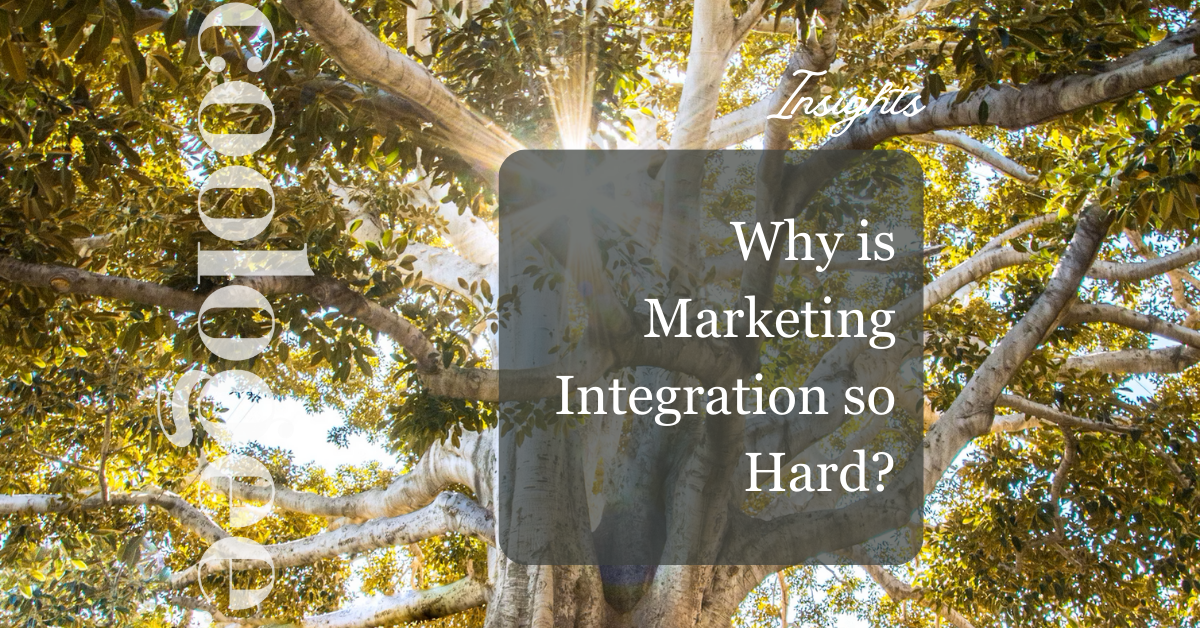Marketing Success Sits at the Intersection of SME Domains.
There is much to do about America’s waning attention span. Mostly in the form of consternation about ‘kids these days’ being on their phones, distracted by trips down the TikTok rabbit hole or the incessant barrage of Snapchat notifications. Fear of missing out creates a state of constant vigilance. Unending connectedness keeps us forever in the social realm, watching for the social cues and gaze from which we historically could take a break within the solace of our own homes.
Our minds are trained to monitor electronic dings, pulling us away from the here and now, and making it very difficult to focus on one thing at a time. This is not just a ‘kids these days’ problem. We have been on a decades long slow and continual pull towards distraction. I remember my dad, now in his seventies, lamenting in the 90s the fax killed corporate workplaces because it set an expectation that a person would be ‘on call’ and ready to respond at the sound of the chrrr chrrr chrrr of the old thermal printer.
Faxes. Telephones. Beepers. Cellphones. Text messaging. Smart phones. Social media. Chat. Video conferencing. There will always be a new communication technology just on the horizon promising to distract and waylay. As a marketer, we must confront this truth – distraction is driven by new and emerging communication technology.
Ah, the irony. The channels we can use to communicate are creating the distraction we need to battle to successfully communicate.
Experts say the average human attention span is just over eight seconds. Eight seconds is not a lot of time to introduce a person to our brand, products, or services. Maybe we can get one message through at a time, but not more. Which means we need to create marketing communications programs that string a row of eight seconds together, preferably within a day or a week timeframe, to build awareness and drive action. Usually, our clients need a string of six to ten impressions to acquire a customer.
In decades past, we had limited communication channel options and could feel confident that our marketing plans would achieve the desired eight to ten frequency goal in our desired window of time. Now, people are overwhelmed by content consumption options (case in point, streaming TV used to beg the question ‘what should I watch’; these days we are asking ‘where can I watch’ with many of us Googling our favorite shows just to figure out which streaming platform is hosting our program).
Media’s cacophony of channel options has forced a fundamental shift in how marketers go-to-market – everyone must work together. Paid search SMEs must work with website managers to coordinate keywords across paid and owned channels. Social media managers and paid social SMEs must work together to coordinate campaign targeting and messaging. CTV media buyers must coordinate with ecommerce and call center management to ensure originating leads are converted quickly. Success sits at the intersection of SMEs within marketing and across the enterprise.
This move towards integration has created a new SME demand for Integrated Strategists. Integrated strategists are adept at paid, owned, and earned strategy development. They may not be hands-on-keyboard SMEs, but they know how to bring the managers and tactician together to create a plan that benefits the entire team, not just the single competency. Unless you are a big spender like my former employer, Progressive Insurance, your marketing efforts will not deliver coordinated message delivery needed to compete. Without integration across channels, you run the risk of sprinkling one, two, or three impressions across targets and channels and your programs will not convert.
Unlike dieting or exercise, in marketing, a little of a lot is a really, really bad thing.
Fun Facts about Human Attention
- Humans have shorter attention spans than goldfishes (nine seconds).
- Your attention span is affected by how emotionally engaged you are – more emotion equates to higher interest and attentiveness.
- If we don’t get enough sleep, our attention span decreases. Nearly 20% of Americans are sleep deprived.
- 40% of Americans have forgotten at least one simple piece of information a week.
- On average, people pay attention to one screen for forty-seven seconds.

 By
By


